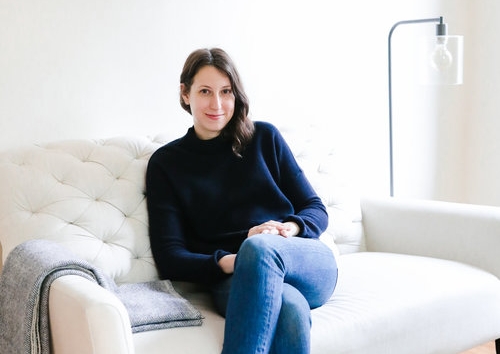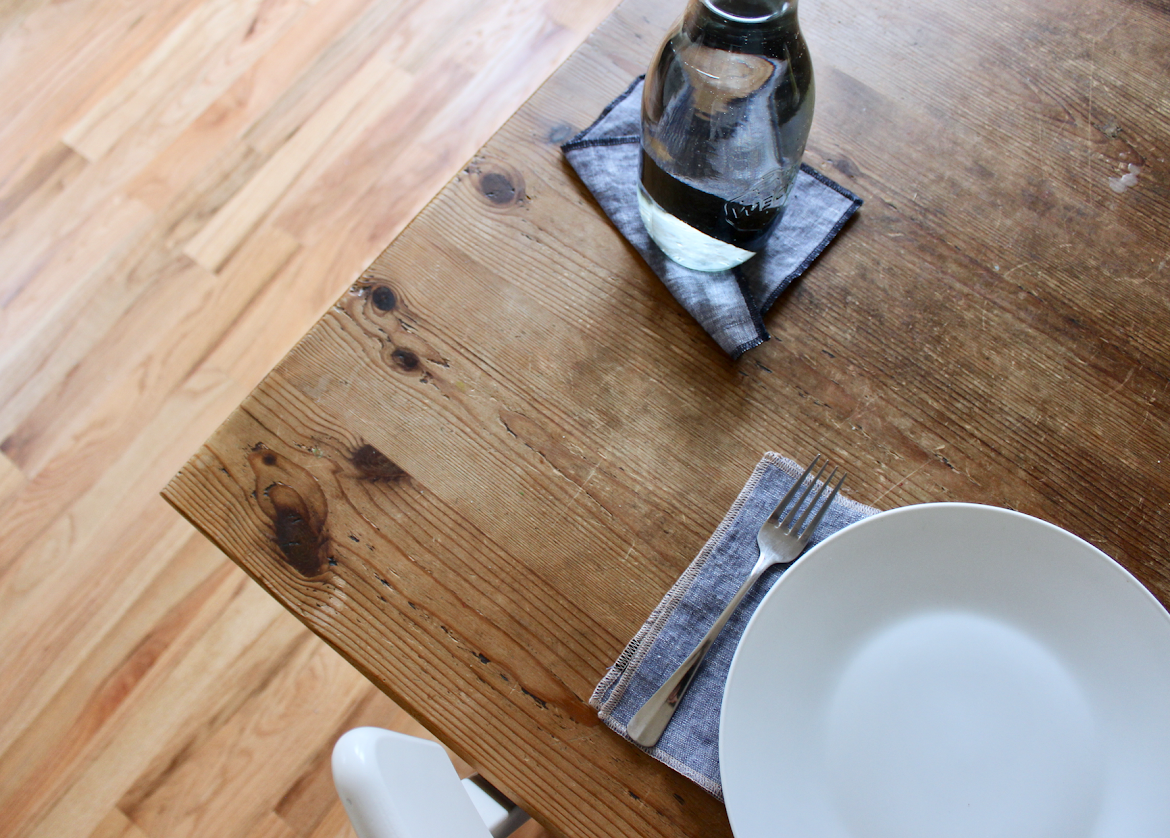Happy Monday but more importantly, Happy Earth Day! We’ve had this special post in the works for a bit and today is the perfect day to share. But to be honest, ourselves, many of you and others alike think about Mother Earth every day. If you’re not someone who currently pays homage to our planet, but is interested in learning more, read on! I also share the small but impactful choices we make in our home for our environment. We hope you enjoy this post.
Caring about our Earth is extremely important. And you may have heard this before: recycling is helpful but not enough. Reusable bags are a good start but have you thought about ditching those thin plastic bags when you collect your produce? How can we make an impact in our everyday lives? Insert the zero-waste movement.
You many have thought about breaking out your mason jars and join the mission to reduce landfill waste but “the word “zero” can feel so intimidating,” says Celia Ristow, the zero waste expert (we think!) behind one of my favorite blogs, Litterless. So first, “zero” is almost impossible in a culture that thrives on convenience and single-use products so when we say, “zero waste” here in this post, we’re really talking more like low waste. Participating in the movement means doing whatever we can do minimize your trash and recycling on a daily basis. We can be more conscious of the lifecycle of the things that we pick up, purchase and consume.
You can go deeper about What is zero waste here.
Living a more sustainable lifestyle can take many different forms and you can “practice” along a broad spectrum. The shift can feel daunting or maybe you don’t know where to start. The truth is that you can start today by making small, thoughtful, conscious choices and investments that will make a big impact.
I asked Celia how she thinks about this choice, the best way to get started, and how to maintain it.
Celia Ristow, Litterless
At what point did you realize you wanted to make the lifestyle change towards zero-waste and why?
I first learned about zero-waste when I was in college; it resonated with me as a way to take my environmentalism further, beyond just signing petitions and attending marches. At the time, I was living in a dorm room and eating in the cafeteria, and so starting a journey toward zero-waste seemed out of my reach, as so many of my daily choices were being made for me. But when I graduated, suddenly I was making all of these choices for the first time: how to clean my house, how to grocery shop, how to develop a cooking routine. To me, it made sense to try to make those choices zero waste from the very beginning.
How does going zero-waste impact your lifestyle?
It’s such a cliché, but in a busy world, we’re always trying to simplify our home and routines to spend less time shopping, cleaning, and cooking, and more time riding our bikes, taking evening walks, and reading in bed.
Zero-waste has reduced many of our chores and inputs. We never have to go to the store for tissues / paper towels / Ziploc bags / trash bags. We don’t need to keep eight different types of household cleaners under our sink; two different homemade sprays work for everything we need. Instead of having to replace plastic razors frequently, we bought a big box of safety razor replacement blades that will probably last us for the next five years, if not more. It may seem hard to believe, but to us practicing zero-waste is easier and less time-consuming than how we used to live.
What's the biggest misconception about going “zero-waste”?
The word “zero” can feel so intimidating. I try to refer to it as “low-waste” or “zero-ish waste.” Nobody can really get to zero - I sure don’t, and zero-waste is my job! I think of “zero-waste” as less of a literal phrase and more of a guiding principle. If you’re trying, if you’re making any changes at all, then to me you’re participating in the movement.
Litterless
What are three ways to start the lifestyle change at home?
When you start composting, you’ll immediately notice your trash output plummet. I also recommend printing your city’s recycling guidelines and taping them up in your kitchen or above your recycling bin, to help make sure you’re not “wishcycling” - throwing non-recyclable items in the recycling bin out of purely wishful thinking. Doing so clogs up recycling machines and makes the whole system less efficient.
Once you’ve got your compost and recycling system in place, I think it makes sense to start by swapping out the next item you run out of for its lower-waste alternative. Used up your cotton rounds in the bathroom? Instead of buying a new pack of disposable ones wrapped in plastic, spend the money on a stack of washable cloth cotton rounds instead. Out of olive oil? See if a local grocery store or food co-op sells it in bulk instead of buying it in a new glass or plastic bottle.
Litterless
What are your three recommended zero waste products/tools/hacks for someone just getting starting?
CLOTH NAPKINS! It’s so easy to make the jump from paper to cloth napkins, and cloth is much lovelier. I like to let my Everyday Co. napkins get rumpled and stained rather than making a Sisyphean effort to keep them pristine.
BYO THERMOS. Paper cups aren’t typically recyclable; they’re lined with plastic to make them waterproof, and recycling machines can’t separate the two materials. But it’s easy to keep those cups out of the landfill: drink your coffee at home, grab it to-go in a reusable thermos, or drink it at the coffee shop in a mug “for here.”
INVEST IN TWO SHEETS OF BEE’S WRAP. It’s a reusable fabric food wrap that’s coated in beeswax, and it replaces plastic wrap, which isn’t recyclable. A sheet will last you six months to a year, and you can wash it gently by hand with a bit of dish soap to use it again and again.
Litterless
What are some unconventional ways to practice zero-waste?
Lately, I’ve been working on decreasing the amount of food I waste, before it even hits the compost bin. This is made even more fun with friends! Get together for a canning party, offer your neighbors your extra produce before you leave for vacation, or swap some of your garden bounty for a friend’s. Zero-waste is better with community, and food is an easy way to start building those easy, back-and-forth swapping and sharing relationships.
ALSO, CHECK OUT 1. how Celia gift wraps and 2. how you can repurpose our Dinner Napkins as Furoshikis!
How do you maintain the zero-waste mentality?
The way I think about going zero-waste is that I try to stay as low-waste as possible while also staying as happy and healthy as possible. We live in a society built on convenience and throwaway, which makes achieving absolute zero impossible when it comes to waste. I don’t stress about times when I do have to make trash - instead, I focus on building small habits that make staying zero-waste most of the time automatic. And then when I’m traveling, at a friend’s party, or moving to a new apartment and waste feels inevitable, I try to let it go rather than feeling guilty. I want to be mostly zero-waste for the rest of my life, not perfectly zero-waste for the next month before giving up on it entirely. Developing an attitude of grace and flexibility has been, for me, essential.
Thank you so much, Celia!
He’re what we do in our home:
We stopped buying paper towels. We have designated older rags and dish towels that we use for cleaning up spills. Many who visit us are surprised by this when they are looking for paper towels (cleaning lady especially) but I just refuse.
We started getting our food scraps picked up by City Compost who will pick up our food waste and turn it into usable soil. Look for a local compost co. to pick up your food scraps.
We use our Everyday cloth napkins every day for not only meals (breakfast, lunch and dinner) but snacks, cleaning an apples, on-the-go, and teaching Nikko & Paloma to be kinder to our Earth (Bonus!).
We use canteens for drinking water on the go. I especially like my Corkcicle Tumbler which I use with their metal straw.
We bring canvas totes to the grocery store and try not to use the plastic bags in the produce section.
We also opt out of the shopping/handle bag when we purchase things at stores.
We refill our detergents, hand soaps, dish soaps and other liquids that we can purchase in bulk. We also buy unwrapped soap (popular at Wholefoods) when we can.
We’re mindful of the energy we use in our home. We limit our use of heat, ac, and use the windows a lot for fresh air. Our Nest Thermostat report and Temperature Sensors are helpful to understand how much we are using and saving. We also wash more dishes by hand vs. running the dish washer and we only do full loads of laundry never small ones.
We donate a lot: clothes, toys, shoes, etc. Donating not only helps people who are in need but also cut down on consumption of new goods.
I’ve been shopping more frequently at second hand stores for seasonal things like cold-weather gear for the kids. Again, no need to buy new (and all the freight, energy, resources associated with buying new) for something that the kids will only wear for a single season! Win, win!
It may not be much but it’s a start and I’m inspired to do more. Here are some other ways you can do your part.
WHAT STEPS WILL YOU TAKE TO GET A LITTLE CLOSER TO ZERO WASTE?
Share your next steps, goals and ideas in our comments below!
*Non of the brand names mentioned above are sponsored or endorsed.




